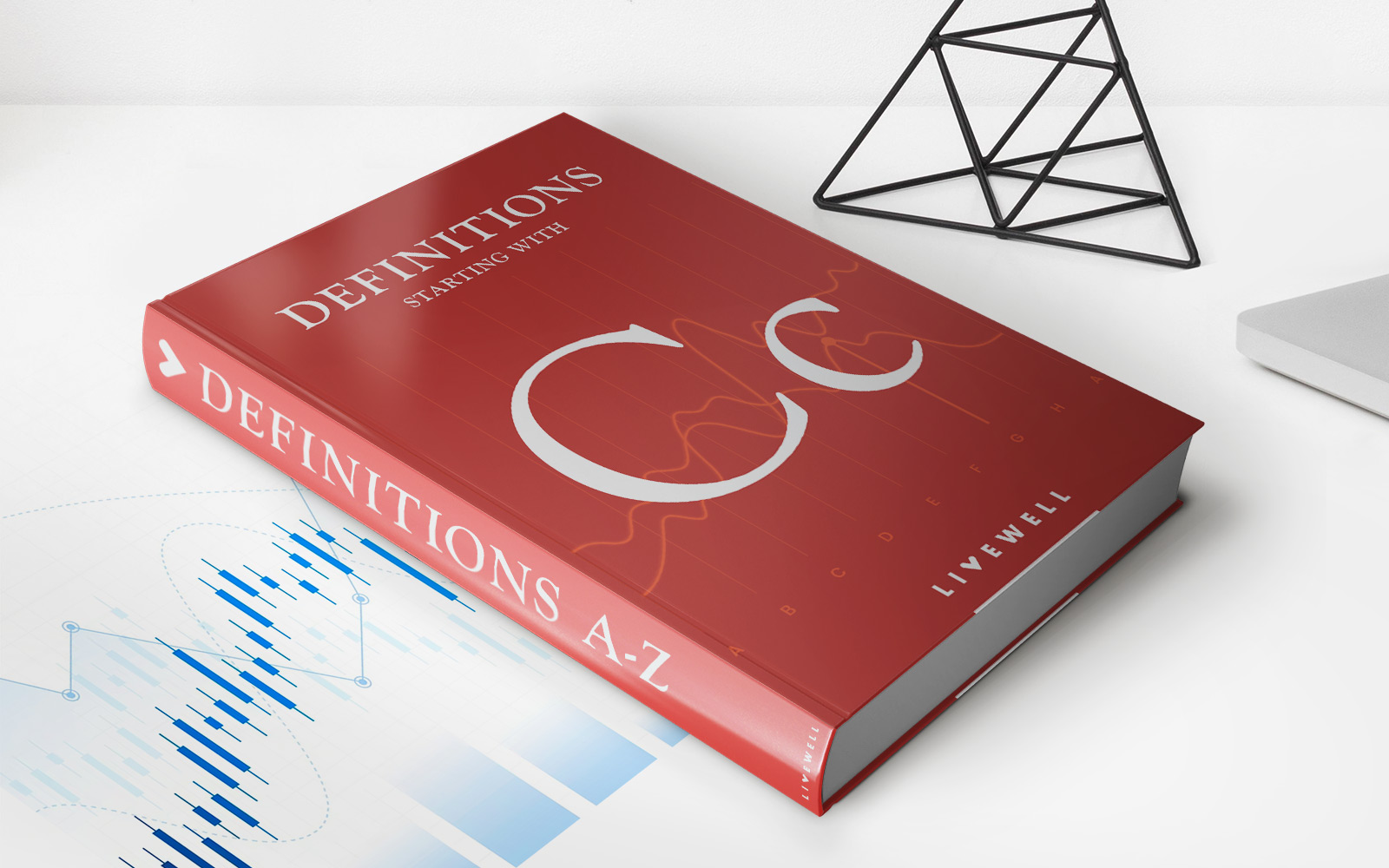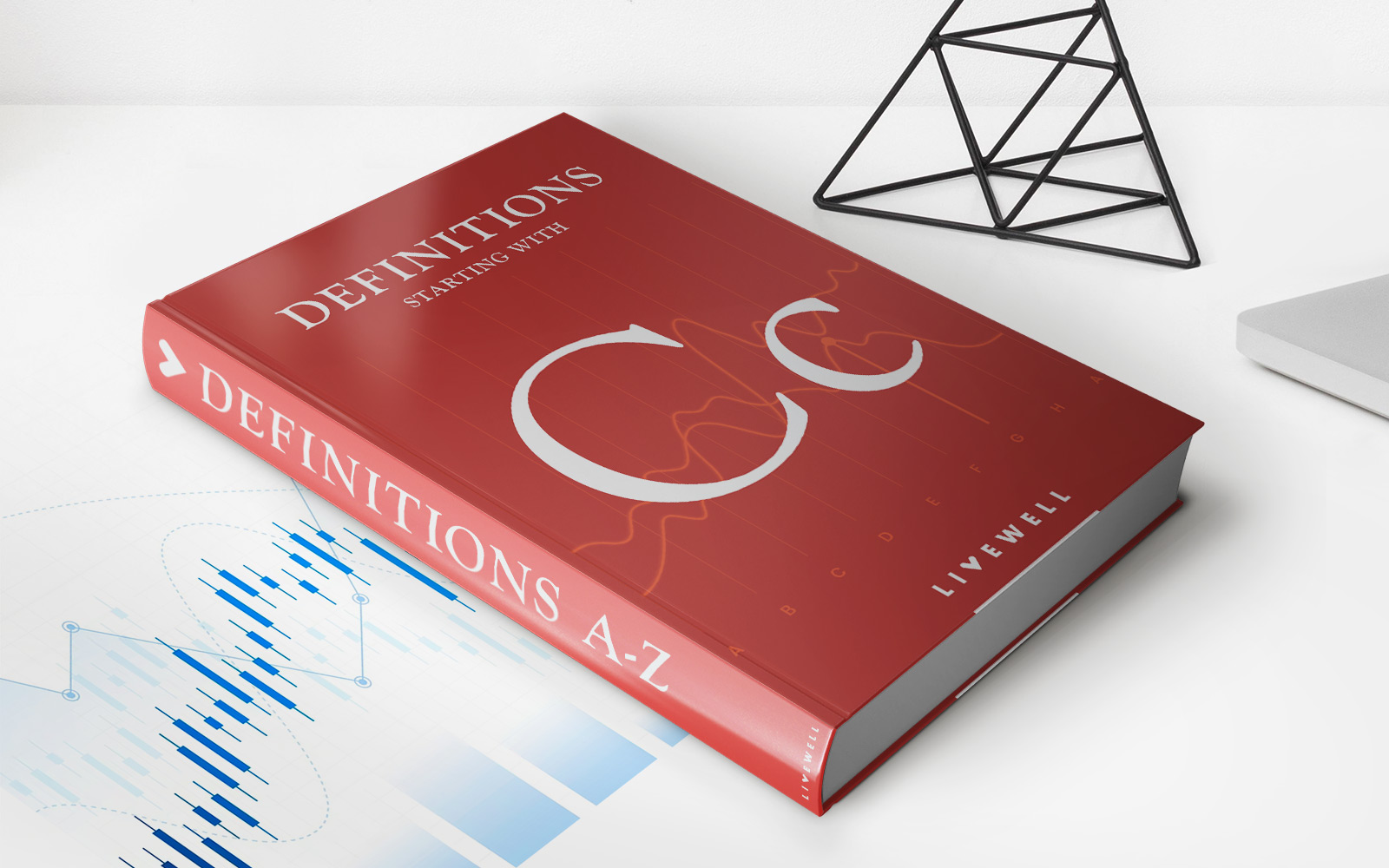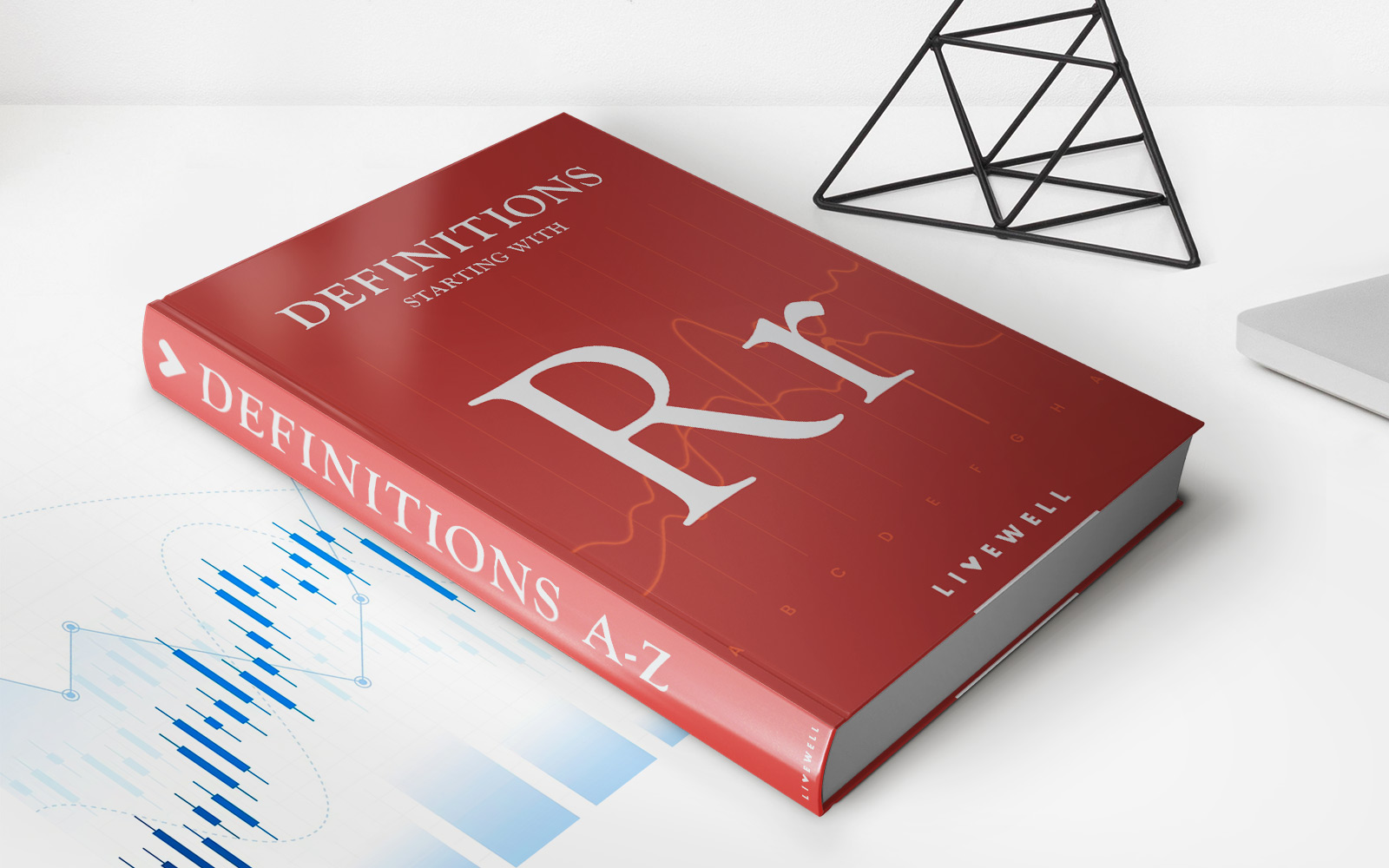Home>Finance>What Is The Difference Between Money Market And Savings


Finance
What Is The Difference Between Money Market And Savings
Published: January 16, 2024
Learn the key distinctions between money markets and savings accounts in the world of finance. Discover which option may be best for you and your financial goals.
(Many of the links in this article redirect to a specific reviewed product. Your purchase of these products through affiliate links helps to generate commission for LiveWell, at no extra cost. Learn more)
Table of Contents
- Introduction
- Definition of Money Market
- Definition of Savings
- Purpose of Money Market
- Purpose of Savings
- Similarities between Money Market and Savings
- Differences between Money Market and Savings
- Interest Rates in Money Market
- Interest Rates in Savings
- Liquidity of Money Market
- Liquidity of Savings
- Deposit Limits in Money Market
- Deposit Limits in Savings
- Accessibility of Money Market
- Accessibility of Savings
- Risk Factors in Money Market
- Risk Factors in Savings
- Conclusion
Introduction
When it comes to managing your finances, it’s important to explore and understand the various options available. Two common types of financial instruments that individuals often consider are money market accounts and savings accounts. While both serve the purpose of helping individuals save and grow their money, there are some key differences between the two.
A money market account is a type of deposit account offered by banks and credit unions. It typically offers a higher interest rate compared to a regular savings account, and it provides a higher level of liquidity. On the other hand, a savings account is a basic deposit account that allows individuals to save money while earning interest.
In this article, we will delve into the differences between money market accounts and savings accounts, including their respective purposes, interest rates, liquidity, deposit limits, accessibility, and risk factors. By understanding these distinctions, you’ll be better equipped to make informed decisions about where to deposit your hard-earned money.
Definition of Money Market
The money market refers to a segment of the financial market where short-term borrowing and lending of funds take place. It primarily deals with highly liquid and low-risk instruments, such as Treasury bills, certificates of deposit (CDs), commercial paper, and repurchase agreements.
Money market accounts are a type of deposit account offered by financial institutions, including banks and credit unions. These accounts usually have a higher minimum balance requirement compared to regular savings accounts. They are designed to provide investors with a safe and easily accessible place to park their funds while earning a competitive interest rate.
One of the key features of money market accounts is their high liquidity. This means that the funds can be readily accessed without delay or penalties, making them suitable for emergencies or short-term financial needs. However, unlike regular savings accounts, money market accounts usually come with some restrictions on the number of withdrawals allowed per month.
The interest rates on money market accounts are variable and are influenced by factors such as the prevailing market interest rates and the policies of the financial institution. While these rates tend to be higher than regular savings accounts, they may not be as high as the potential returns from riskier investments.
Overall, money market accounts provide individuals with a safe and easily accessible option for saving their money while earning a competitive interest rate. They offer a balanced combination of liquidity, low risk, and potential returns, making them an attractive choice for those seeking a short-term investment vehicle.
Definition of Savings
Savings accounts are one of the most common and straightforward financial instruments available to individuals. They are offered by banks and credit unions and serve as a secure place to deposit and save money, while earning a modest amount of interest.
A savings account allows individuals to set aside a portion of their income for future use or emergencies. It is a flexible financial tool that offers liquidity, meaning account holders can withdraw their funds at any time without penalties. However, there may be limits on the number of withdrawals allowed per month to encourage saving behavior and maintain the stability of the account.
Unlike money market accounts, savings accounts generally have lower minimum balance requirements, making them more accessible to a wider range of individuals. They are often seen as a long-term savings vehicle, where individuals can accumulate funds over time and earn interest on their deposits.
The interest rates on savings accounts are typically lower compared to money market accounts. However, they provide a steady and predictable return on investment. These rates can vary from one financial institution to another and may be influenced by factors such as the current market conditions.
Savings accounts are a safe and secure way to grow your money without taking on significant risks. They are protected by deposit insurance, such as the Federal Deposit Insurance Corporation (FDIC) in the United States, which guarantees the safety of deposits up to a certain limit per depositor.
Overall, savings accounts offer individuals a simple and reliable option for saving money and earning interest. They provide flexibility, accessibility, and security, making them a popular choice for those looking to build an emergency fund, save for a future goal, or simply create a financial cushion.
Purpose of Money Market
The primary purpose of the money market is to facilitate the short-term borrowing and lending of funds among financial institutions, governments, and corporations. It serves as a crucial component of the overall financial system, ensuring the efficient allocation of capital and liquidity management.
For financial institutions, money market instruments provide a way to meet their short-term funding needs. They can borrow funds by issuing commercial paper or taking part in repurchase agreements. These instruments help banks and other institutions manage their cash flow and maintain stability in their operations.
Government entities also utilize the money market to finance their short-term funding requirements. They issue Treasury bills as a means of raising capital to fund government operations. These Treasury bills are considered one of the most liquid and secure investments available in the market.
Corporations may also use the money market to raise short-term funds for various purposes, such as financing inventory or meeting payroll obligations. They can issue commercial paper, which represents a short-term debt instrument issued by a company to investors with a fixed maturity period.
Individual investors can participate in the money market indirectly through money market mutual funds. These funds pool together funds from multiple investors and invest in a diversified portfolio of money market instruments. The objective is to provide investors with a low-risk investment option that aims to preserve capital and generate a competitive rate of return.
Overall, the purpose of the money market is to provide a mechanism for the efficient allocation of short-term funds. It enables financial institutions, governments, and corporations to meet their immediate financing needs while providing investors with a safe and stable investment avenue. The money market plays a vital role in maintaining liquidity and stability within the financial system, contributing to overall economic growth and development.
Purpose of Savings
The primary purpose of a savings account is to encourage individuals to save and accumulate funds for future use or emergencies. It serves as a secure and accessible place to deposit money while earning a modest amount of interest.
Savings accounts are an essential tool for personal financial management. They provide individuals with a designated space to set aside a portion of their income, helping them meet their financial goals and build a safety net for unexpected expenses.
One of the key purposes of a savings account is to create an emergency fund. Life is full of unexpected events, such as medical emergencies, car repairs, or job loss. By regularly depositing money into a savings account, individuals can prepare themselves financially for these unforeseen circumstances, avoiding the need to rely on credit cards or loans.
Savings accounts also serve as a vehicle for long-term savings. Whether saving for a down payment on a home, a dream vacation, or retirement, a savings account allows individuals to accumulate funds over time. The interest earned on the deposits adds to the growth of the savings, providing a passive form of income.
Furthermore, a savings account is often seen as a stepping stone for individuals to develop disciplined saving habits. It creates a sense of financial responsibility and encourages individuals to prioritize savings as a regular practice. This can be the foundation for building wealth and achieving financial stability in the long run.
Another purpose of a savings account is to achieve specific financial goals, such as saving for education, starting a business, or making a major purchase. By allocating funds to a savings account, individuals can systematically work towards these goals, ensuring they have the necessary funds when the time comes.
Additionally, a savings account provides individuals with peace of mind and a sense of financial security. Knowing that their money is safely deposited in a regulated financial institution, individuals can trust that their funds will be accessible when needed.
In summary, the purpose of a savings account is to foster a culture of saving, provide a secure place to deposit funds, and help individuals achieve their short-term and long-term financial goals. It serves as a reliable tool for building an emergency fund, saving for specific goals, and creating a solid financial foundation.
Similarities between Money Market and Savings
While money market accounts and savings accounts have distinct characteristics and purposes, there are several similarities between the two financial instruments. Understanding these similarities can help individuals make informed decisions about which type of account suits their financial needs. Here are some commonalities shared by money market and savings accounts:
-
Both are deposit accounts: Money market accounts and savings accounts are both forms of deposit accounts offered by financial institutions. Individuals deposit money into these accounts, and the institutions hold and manage these funds on their behalf.
-
Insured by Deposit Insurance: Both money market accounts and savings accounts are generally protected by deposit insurance. In the United States, for example, the Federal Deposit Insurance Corporation (FDIC) insures deposits up to a certain amount per depositor in member banks. This insurance provides individuals with confidence that their deposits are safe and protected.
-
Provide Interest: Money market accounts and savings accounts offer interest on deposited funds. While the interest rates may vary between the two types of accounts, they both provide individuals with the opportunity to earn earnings on their savings over time.
-
Regulated by Financial Authorities: Both money market accounts and savings accounts are subject to regulations and oversight by financial authorities. These regulations aim to ensure the safety and integrity of the financial system and protect the rights of account holders.
-
Accessibility: Both money market accounts and savings accounts provide individuals with the flexibility to access their funds when needed. While there may be limits on the number of withdrawals allowed per month for both types of accounts, they still offer a higher level of accessibility compared to other long-term investment options.
These similarities between money market and savings accounts highlight their shared foundation as deposit products that allow individuals to save money, earn interest, and have access to their funds. However, it’s important to recognize their differences as well, as these distinctions can impact the specific goals, liquidity needs, and returns individuals may expect from each type of account.
Differences between Money Market and Savings
While money market accounts and savings accounts share some similarities, they also have distinct characteristics that set them apart. Understanding the differences between these two financial instruments can help individuals choose the option that best aligns with their financial goals and needs. Here are some key differences between money market and savings accounts:
-
Interest Rates: Money market accounts generally offer higher interest rates compared to savings accounts. This is because money market accounts often require a higher minimum balance and are considered to be more active investment vehicles. Savings accounts, on the other hand, provide a more conservative rate of return.
-
Liquidity: Money market accounts offer a higher level of liquidity compared to savings accounts. Individuals can typically make a limited number of withdrawals per month from savings accounts without incurring any fees. In contrast, money market accounts may provide more flexibility in terms of withdrawals and checks, allowing for easier access to funds.
-
Deposit Limits: Money market accounts generally have higher minimum balance requirements compared to savings accounts. Financial institutions often set these minimums to ensure that money market accounts maintain a certain level of activity and balance. Savings accounts, on the other hand, tend to have lower or even no minimum balance requirements, making them more accessible to a wider range of individuals.
-
Accessibility: Money market accounts may offer more accessibility options compared to savings accounts. They often come with features such as check-writing privileges and electronic transfers, providing individuals with more avenues to access their funds. Savings accounts, while still offering accessibility, typically have more limited options for withdrawals.
-
Risk Factors: Money market accounts carry slightly higher risk compared to savings accounts. Although money market accounts are considered low-risk investments, the underlying instruments such as commercial paper and Treasury bills may still carry some level of credit risk. Savings accounts, on the other hand, are considered low-risk due to their focus on insured bank deposits.
It’s important for individuals to consider these differences when choosing between a money market account and a savings account. Factors such as desired interest rates, liquidity needs, minimum balance requirements, accessibility options, and tolerance for risk should all be taken into account. By understanding these distinctions, individuals can make informed decisions that align with their financial goals and preferences.
Interest Rates in Money Market
Interest rates are a crucial factor to consider when choosing financial instruments, and money market accounts are no exception. Money market accounts typically offer higher interest rates compared to traditional savings accounts, making them an attractive option for individuals seeking a higher return on their investments.
The interest rates on money market accounts are influenced by various factors. One key factor is the prevailing market interest rates set by central banks. When central banks increase or decrease interest rates, it can have a ripple effect on money market rates. If central banks raise rates to control inflation, money market rates may follow suit.
Another factor influencing money market rates is the supply and demand dynamics in the market. When the demand for money market instruments is high, such as during periods of economic uncertainty or tight credit conditions, it can drive up interest rates. Conversely, if there is an oversupply of funds in the market, interest rates may decrease.
The creditworthiness and perceived risk of the institutions issuing money market instruments also play a role in determining interest rates. Instruments issued by institutions with higher credit ratings and lower perceived risk tend to offer lower interest rates, reflecting their stability and security. On the other hand, instruments with higher risk profiles may offer higher interest rates to compensate investors for taking on additional risk.
It’s important to note that money market account interest rates can fluctuate over time. While they tend to be more stable compared to other short-term investment options, they are not fixed and are subject to change based on market conditions.
Furthermore, the interest rates offered by money market accounts can vary between financial institutions. Different banks and credit unions may have different rates based on their internal policies, competitive positioning, and market conditions. It’s advisable to research and compare rates offered by different institutions to find the most competitive option.
Overall, money market accounts provide individuals with the potential for higher interest rates compared to traditional savings accounts. These rates are influenced by market conditions, supply and demand factors, and the credit quality of the institutions issuing the money market instruments. By closely monitoring market trends and comparing rates across multiple providers, individuals can make informed decisions about investing in money market accounts.
Interest Rates in Savings
Interest rates play a significant role in determining the attractiveness of savings accounts as a financial tool for individuals. While savings accounts are known for their security and accessibility, the interest rates they offer tend to be lower compared to other investment options.
The interest rates in savings accounts are influenced by a combination of factors, including market conditions, monetary policy set by central banks, and the individual policies of financial institutions. Market conditions, such as inflation rates and economic performance, can impact the interest rates offered by savings accounts.
One of the primary factors influencing savings account interest rates is the monetary policy set by central banks. When central banks raise benchmark interest rates to control inflation or stimulate economic growth, it can have a trickle-down effect on savings account rates. Banks may adjust their savings account rates in response to changes in the overall interest rate environment set by the central bank.
In addition to the impact of central bank policies, financial institutions have their own strategies and objectives in setting interest rates for savings accounts. Factors such as the institution’s funding costs, profitability goals, and competitive positioning can influence the rates offered to account holders.
It’s important to note that savings account interest rates are typically lower compared to other investment options due to their lower level of risk and the ease of accessing funds. Savings accounts are designed to offer stability, security, and accessibility rather than high returns. Individuals who prioritize safety and liquidity over potential growth typically opt for savings accounts.
The specific interest rate offered on a savings account can vary between different financial institutions. It’s advisable to compare rates from various banks and credit unions to find the most competitive option. Additionally, it’s worth noting that savings account interest rates can change over time due to fluctuations in market conditions and evolving financial institution policies.
While savings account interest rates may not provide significant returns compared to riskier investments, they still offer the advantage of stability and peace of mind. In uncertain economic times or for individuals looking to build an emergency fund, savings accounts can provide a reliable way to save and earn a modest amount of interest on deposited funds.
In summary, savings account interest rates are influenced by market conditions, central bank policies, and financial institution strategies. While they may not provide high returns, savings account interest rates offer stability and security for individuals seeking a safe place to save and grow their money.
Liquidity of Money Market
Liquidity refers to the ability to convert an asset into cash quickly without incurring significant losses or delays. In the context of money market accounts, these financial instruments are known for their high level of liquidity, which is one of the key advantages they offer to investors.
Money market accounts provide individuals with a higher degree of liquidity compared to many other types of investments. This is due to the nature of the underlying money market instruments held within these accounts, such as Treasury bills, certificates of deposit (CDs), and commercial paper.
Money market accounts offer individuals the flexibility to access their funds quickly and conveniently. Unlike some other investment options that may have restrictions or penalties for early withdrawals, money market accounts allow individuals to make withdrawals without significant delays or financial consequences, making them suitable for both planned expenses and unforeseen emergencies.
However, it’s important to note that while money market account holders can access their funds easily, there are often limits on the number of transactions or withdrawals they can make within a given period. These limits are in place to maintain the liquidity and stability of the money market accounts as a whole.
Furthermore, money market accounts may provide additional features that enhance their liquidity, such as check-writing privileges and electronic transfers. These options allow account holders to conveniently access their funds for everyday expenses or to move money between different accounts when needed.
In terms of investment flexibility, money market accounts offer a range of options to suit individual preferences and risk tolerance. Investors can choose from different types of money market instruments, each offering varying degrees of liquidity and potential returns. For example, Treasury bills are highly liquid but may offer lower returns compared to CDs, which typically have longer maturity periods.
In summary, money market accounts are known for their high level of liquidity. They provide individuals with the convenience and flexibility to access their funds quickly, making these accounts suitable for both short-term and emergency needs. While limits may exist on the number of transactions and withdrawals allowed, money market accounts still offer a higher degree of accessibility compared to many other investment options.
Liquidity of Savings
Liquidity refers to the ease with which an asset can be converted into cash without incurring significant losses or delays. In the case of savings accounts, liquidity is one of the key features that make them attractive to individuals as a financial tool.
Savings accounts offer a high level of liquidity, allowing individuals to access their funds whenever they need them. Unlike certain long-term investments or assets that may have restrictions or penalties for early withdrawals, savings accounts provide individuals with the flexibility to withdraw their money without significant delays or financial consequences.
In most cases, savings accounts allow unlimited withdrawals, which means account holders can access their funds whenever necessary. This makes savings accounts a practical option for both planned expenses and unexpected financial needs, such as medical emergencies or car repairs.
However, it’s important to note that savings accounts often have limitations on the number of transactions or withdrawals individuals can make within a specific time period. These limitations are typically imposed to maintain the stability and liquidity of the savings accounts, as well as to ensure that individuals are using them primarily for saving purposes rather than frequent transactions.
While savings accounts provide a high level of liquidity, it’s essential to distinguish between accessibility and investment growth potential. While individuals can easily access their funds in a savings account, the interest rates offered on savings accounts are generally lower compared to other investment options. This is because savings accounts prioritize safety and accessibility over high returns.
Additionally, savings accounts may offer different options for accessing funds. Common methods include ATM withdrawals, in-person cash withdrawals at a bank branch, online transfers, and electronic payments. These convenient options provide individuals with flexibility when it comes to managing their finances and accessing their savings.
In summary, savings accounts provide individuals with a high level of liquidity, allowing for easy access to funds when needed. While there may be limitations on the number of transactions or withdrawals, savings accounts offer the flexibility required for planned expenses and unexpected financial needs. However, it’s important to keep in mind that savings accounts may not offer the highest returns compared to other investment options.
Deposit Limits in Money Market
Money market accounts often have specific requirements and deposit limits set by financial institutions. These limits are put in place to maintain the stability of the account and ensure the availability of funds for all participants. Understanding deposit limits is important when considering opening a money market account.
The deposit limits for money market accounts vary depending on the financial institution and the specific account terms. The minimum deposit required to open a money market account can range from a few hundred to several thousand dollars. This minimum balance requirement serves as a threshold to ensure that the account remains active.
In addition to the initial deposit requirement, some money market accounts may have ongoing balance requirements. These requirements specify that the account must maintain a minimum balance to avoid fees or potential downgrade to a regular savings account. The ongoing balance requirement helps ensure that the account continues to meet the criteria of a money market account, such as higher interest rates and additional features.
Financial institutions may also set maximum deposit limits on money market accounts. These limits specify the maximum amount that can be deposited into the account. The purpose of maximum deposit limits is to prevent any single account holder from disproportionately influencing the liquidity and stability of the money market account.
Individuals should be mindful of the deposit limits when considering a money market account. It’s essential to assess whether the minimum balance and ongoing balance requirements align with personal financial goals and liquidity needs. Additionally, individuals with larger sums of money to deposit may need to confirm if the financial institution can accommodate their deposit size within any maximum limits.
By understanding the deposit limits associated with money market accounts, individuals can make informed decisions on whether the account suits their financial circumstances and goals. It’s advisable to compare different financial institutions to find an account with deposit limits that align with personal preferences and needs.
Deposit Limits in Savings
Savings accounts typically have different deposit requirements and limits depending on the financial institution and the specific terms and conditions of the account. These deposit limits ensure the stability and accessibility of the savings account while accommodating a wide range of depositors. Understanding the deposit limits is essential when opening a savings account.
When it comes to the minimum deposit requirement for a savings account, it varies among financial institutions. Some banks and credit unions may require a minimum initial deposit to open the account, while others may allow you to open an account with no minimum deposit at all. This minimum deposit requirement ensures that the account remains active and meets the institution’s criteria.
Financial institutions may also set maximum deposit limits on savings accounts. These limits specify the maximum amount that can be deposited into the account. The purpose of maximum deposit limits is to prevent any single account holder from disproportionately influencing the liquidity and stability of the bank or credit union.
In addition to maximum deposit limits, financial institutions might impose additional restrictions on larger deposits. For very large deposits, banks may require additional documentation or verification to comply with anti-money laundering regulations and ensure the legitimacy of the funds.
It’s worth noting that while there may be deposit limits, savings accounts usually allow for ongoing deposits over time. Individuals can regularly deposit funds into their savings accounts as they earn income or have additional money available for saving. This flexibility allows individuals to grow their savings gradually and contribute to their financial goals.
Understanding the deposit limits in a savings account is crucial for individuals, especially if they have specific deposit requirements or larger sums of money to deposit. It’s advisable to compare different financial institutions to find a savings account with deposit limits that align with personal financial goals and circumstances.
By being aware of the deposit limits, individuals can open a savings account that suits their needs and deposit funds accordingly. Whether it’s meeting the minimum deposit requirement or considering potential maximum limits, understanding the deposit limits ensures that individuals can actively and effectively manage their savings.
Accessibility of Money Market
Money market accounts offer a high level of accessibility, allowing individuals to easily access their funds when needed. While they may have some restrictions compared to regular checking accounts, money market accounts provide multiple avenues for account holders to manage and utilize their money.
One of the key features that enhance the accessibility of money market accounts is the ability to write checks. Many financial institutions that offer money market accounts provide account holders with a limited number of checks to write each month. This check-writing feature allows account holders to make payments directly from their money market account, providing a convenient and flexible way to handle expenses.
In addition to check-writing privileges, money market accounts typically offer electronic transfer options. Account holders can transfer funds easily and quickly between their money market account and other accounts they hold within the same financial institution. This includes transferring funds to other accounts for investment purposes or making payments online.
Money market accounts may also provide the option for electronic bill pay services. This feature allows account holders to set up and automate regular bill payments directly from their money market account, providing convenience and saving time on managing monthly expenses.
While money market accounts offer these convenient features, it’s important to note that there may be limitations on the number of transactions and withdrawals allowed within a specific time period. Financial institutions typically impose these limits to maintain the stability and liquidity of the money market account as a whole.
By offering various options for account holders to access their funds, money market accounts strike a balance between liquidity and financial discipline. While they provide accessibility, the limited number of transactions allowed per month encourages account holders to use the account primarily for saving purposes rather than frequent withdrawals.
In summary, money market accounts offer a high level of accessibility through features such as check writing, electronic transfers, and bill pay services. These options provide account holders with flexibility and convenience in managing their funds. However, it’s important to be mindful of the restrictions on transactions and withdrawals to ensure that the account remains aligned with its purpose as a savings and investment vehicle.
Accessibility of Savings
Savings accounts are designed to provide individuals with easy and convenient access to their funds. They offer a high level of accessibility, allowing account holders to manage and utilize their money as needed.
One of the primary ways individuals can access their savings accounts is through ATM withdrawals. Most banks and credit unions provide access to ATMs where account holders can withdraw cash or perform basic banking transactions. This widespread network of ATMs ensures that individuals can access their savings quickly and conveniently, especially in emergency situations.
In addition to ATM withdrawals, savings accounts often come with other convenient options for accessing funds. Many financial institutions offer online banking services, allowing individuals to manage their savings accounts through secure web portals or mobile apps. This enables account holders to view their balances, transfer funds, and even set up automatic transfers or bill payments.
Moreover, savings accounts can be linked to checking accounts for easy fund transfers between the two accounts. This linkage allows individuals to move money seamlessly between their savings and checking accounts, making it convenient to cover expenses or manage cash flow.
While savings accounts provide accessibility, it’s important to keep in mind that there may be limitations on the number of withdrawals or transactions allowed per month. These limitations are typically in place to encourage individuals to use savings accounts for their intended purpose of saving money rather than as a primary transactional account. However, these restrictions are often reasonable and provide individuals with sufficient flexibility to manage everyday financial needs.
Moreover, the accessibility of savings accounts is also influenced by the operating hours of financial institutions. Although traditional banks may have specific opening and closing times, online banking services are available 24/7, allowing individuals to access their savings accounts at any time of the day or night.
In summary, savings accounts offer a high level of accessibility through various channels such as ATM withdrawals, online banking, and fund transfers. These options ensure individuals can conveniently manage and utilize their savings as needed. While there may be limitations on the number of transactions, these restrictions are in place to encourage responsible saving and ensure the long-term growth of funds in the account.
Risk Factors in Money Market
While money market accounts are generally considered low-risk investments, there are still some risk factors that individuals should be aware of when considering investing in them. Understanding these risk factors can help individuals make informed decisions and manage their money effectively.
One of the potential risk factors in money market accounts is credit risk. Money market instruments, such as commercial paper and certificates of deposit, are issued by various entities, including corporations and financial institutions. There is a possibility that these issuers may default on their obligations, leading to a loss of principal or interest for investors. The creditworthiness of the issuers is an essential factor to consider when investing in money market accounts.
While money market accounts are designed to offer a higher level of liquidity compared to other investments, there can still be some liquidity risk. In times of financial stress or market volatility, it may become more challenging to sell money market instruments quickly at their intended value. This could result in delays or losses if individuals need immediate access to their funds. However, the risk of liquidity in money market accounts is generally considered lower compared to longer-term investments.
Changes in interest rates can also pose a risk to money market accounts. Money market instruments, such as Treasury bills, have fixed interest rates. If market interest rates rise significantly, the fixed interest rate of the money market instrument may become less attractive, leading to a potential loss of opportunity for higher returns. However, it’s important to note that money market accounts are typically less sensitive to interest rate fluctuations compared to longer-term fixed-income investments.
Other risk factors to consider in money market accounts include regulatory changes and inflation. Changes in regulations governing money market accounts or the underlying instruments can impact the stability and returns of the accounts. Additionally, inflation can erode the purchasing power of the funds held in money market accounts over time, especially if the interest rates earned on the accounts are lower than the rate of inflation.
It’s crucial to note that while money market accounts carry some risk factors, they generally offer a more stable and low-risk investment option compared to other types of investments. Financial institutions offering money market accounts often have risk management strategies in place to mitigate these risks and provide individuals with a relatively safe place to park their funds while earning a competitive return.
Before investing in a money market account, it’s advisable to carefully assess the creditworthiness of the issuers, understand the terms and conditions of the account, and consider the potential risks in light of personal financial goals and risk tolerance. Diversifying investments, staying informed about market conditions, and regularly reviewing the performance of the money market account can further help individuals manage the associated risks.
Risk Factors in Savings
Savings accounts are generally considered low-risk financial instruments that offer individuals a secure place to store their funds. However, it’s important to be aware of potential risk factors that may affect savings accounts. Understanding these risks can help individuals make informed decisions and manage their savings effectively.
One of the main risk factors to consider in savings accounts is inflation risk. Inflation refers to the gradual increase in prices over time, which reduces the purchasing power of money. While savings accounts offer stability and security, the interest rates they provide may not always keep up with inflation. As a result, the real value of savings may erode over time if the interest earned on the account does not outpace inflation.
Another risk factor to consider is interest rate risk. Savings account interest rates are influenced by market conditions and the policies of financial institutions. If market interest rates rise, the rates on existing savings accounts may not increase in tandem. This means the account holders may miss out on potential higher returns available from other investments. However, it’s important to note that the impact of interest rate changes on savings accounts is typically less significant compared to longer-term fixed-income investments.
Liquidity risk is generally low in savings accounts, as individuals can access their funds easily and quickly. However, there may be limitations on the number of transactions or withdrawals allowed per month. Exceeding these limits may result in fees or restrictions on access to funds. It’s important to be mindful of these limitations, especially when individuals require frequent access to their savings.
Another risk to consider is the impact of fees and charges associated with savings accounts. While many financial institutions offer no-fee savings accounts, some may impose fees for certain types of transactions or for falling below a minimum balance requirement. It’s essential to review the account terms and conditions to understand any potential costs and how they may impact the overall returns on the savings.
Lastly, regulatory changes can influence the stability and features of savings accounts. Changes in regulations governing banks and financial institutions may affect the interest rates, deposit insurance coverage, or other aspects of savings accounts. It’s important to stay informed about any regulatory changes that may impact savings accounts and adjust the investment strategy accordingly.
While savings accounts carry minimal risk compared to more volatile investment options, it’s crucial to understand the potential risks associated with them. By considering inflation risk, interest rate risk, liquidity risk, fees, and regulatory changes, individuals can make informed decisions about how to manage and grow their savings effectively.
It’s advisable to diversify investments, review account terms and conditions, and stay informed about market conditions and regulatory changes. Regularly assessing the performance of the savings account and adjusting as needed can help individuals navigate potential risks and make the most of their savings.
Conclusion
Money market accounts and savings accounts are both valuable financial tools for individuals looking to save and grow their money. While they share some similarities, such as providing a safe place to deposit funds and earning interest, they also have distinct differences in terms of interest rates, liquidity, deposit limits, accessibility, and risk factors.
Money market accounts offer higher interest rates compared to savings accounts and often require a higher minimum balance. They provide a higher level of liquidity, allowing individuals to access their funds easily through check-writing privileges and electronic transfers. However, there may be limitations on the number of transactions allowed per month, and money market accounts carry some associated risk factors such as credit risk and liquidity risk.
On the other hand, savings accounts offer lower interest rates but provide a high level of accessibility. Individuals can access their funds through ATM withdrawals, online banking services, and fund transfers. While there may be limitations on withdrawals, savings accounts are considered low-risk and offer stability and convenience. However, savings accounts may be subject to inflation risk and interest rate risk over time.
Ultimately, the choice between a money market account and a savings account depends on an individual’s financial goals, liquidity needs, and risk tolerance. Money market accounts are suitable for those seeking higher returns and are willing to maintain higher minimum balances. Savings accounts are ideal for individuals who prioritize accessibility, convenience, and a lower degree of risk.
Regardless of the chosen account type, it’s important to research and compare rates and features offered by different financial institutions. This ensures individuals find the most suitable account that aligns with their financial objectives and preferences.
In conclusion, money market accounts and savings accounts play valuable roles in helping individuals save and grow their money. By understanding the similarities and differences between these two financial instruments, individuals can make informed decisions based on their unique financial circumstances and goals. Both account types offer individuals the opportunity to securely save and access their funds while earning a return, contributing to their overall financial well-being.














